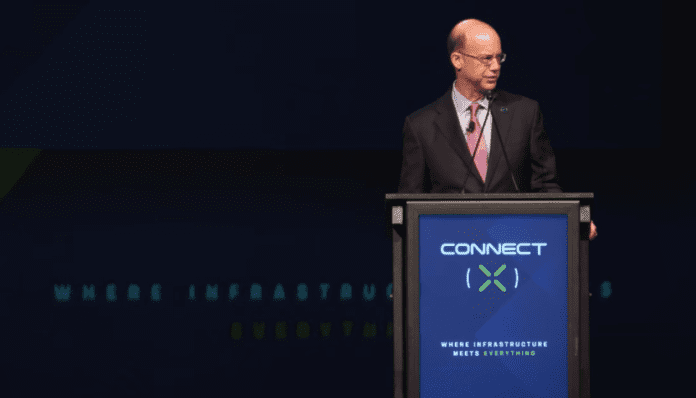Former FCC commissioner discusses policy support for 5G
In a recent interview aired on C-SPAN, Wireless Infrastructure Association (WIA) President and CEO Jonathan Adelstein boiled down what’s needed for 5G: “What we need to make 5G work is more spectrum as soon as we can get it, we need to eliminate barriers to siting wireless infrastructure and we need to make sure that we have people properly trained to actually build these networks. We’re finding support from policymakers on all of those fronts. The wind’s at our back in that sense…but these are not minor issues.”
Taken one at a time, the FCC has a number of spectrum-related projects in process, including a rule-making that would open up the 3.5 GHz Citizens Broadband Radio Service (CBRS) band for shared use under a three-tiered licensure system, and a series of millimeter wave frequency auctions with the first set to start on Nov. 14.
On the infrastructure side, Adelstein expects construction of more macro towers, the addition of more equipment to existing towers, upgrades to existing tower equipment and, “We estimate we’re going to need, in the next eight years or so, 800,000 small cells.”
Small cell deployment at scale has proved tricky given the complexities of securing a site, power and backhaul amid a spiderweb of varying local-level regulations and pole attach agreements with incumbents. To smooth that process, the FCC earlier this month adopted what’s called “one-touch, make-ready.”
Subscribe now to get the daily newsletter from RCR Wireless News
FCC Chairman Ajit Pai described the problem as it relates to a new market entrant. He said, for a company trying to enter the space, it “can be hard, if not impossible, if your business plan relies on other entities to make room for you on those poles. Today a broadband provider that wants to attach fiber or other equipment to a pole first must wait for, and pay for, each existing attacher to sequentially move existing equipment and wires. This can take months. And the bill for multiple truck rolls adds up.”
In a nutshell, the FCC rules changes remove the multi-step make-ready process and install a regime “in which the new attacher performs all make-ready work,” according to documents published by the regulatory body.
WIA has a number of programs designed to train the wireless workforce in the skills necessary for continued network construction in the 5G era. One is the Telecommunications Industry Registered Apprenticeship Program (TIRAP), which involves WIA, the Department of Labor and telecom companies.
Click here to watch the half-hour C-SPAN segment; Adelstein discusses the WIA’s work with Bloomberg News reporter Todd Shields and C-SPAN host Peter Slen.

